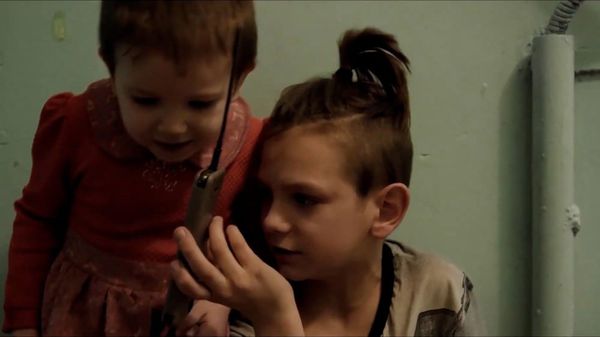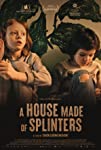Eye For Film >> Movies >> A House Made Of Splinters (2022) Film Review
A House Made Of Splinters
Reviewed by: Jennie Kermode

In 2016, director Simon Lereng Wilmont travelled to Eastern Ukraine to make The Distant Barking Of Dogs. a film about a child struggling to survive when impacted by war. In 2021 he returned there, this time as a documentarian, to tell the story of a group of real children. The Lysychansk Centre is a temporary home for kids who have been removed from their families but whose long term fate is undecided. They could go back home, be fostered or adopted, or be placed in orphanages. It depends, for the most part, on what the courts decide – and that could take as long as nine months.
The home has been pushed to capacity of late as a result of the additional pressures created by the Russian invasion, but what we see here is an ongoing problem – sometimes generational – and one with analogues all over the world. Dedicated staff do their best to care for the children, never letting their despair show in front of them. The day begins with waking every child up individually, affectionately, and doing exercises together, an opportunity to interact and play. The carers’ warmth inspires the children to care for one another, in spite of the pain which practically all of them carry, in spite of the tough image some are striving to create.
With an unobtrusive, observational approach, Wilmont explores the experience of running and living in the home from the perspectives of adults and children alike, paying particular attention to three of the latter whose stories seem representative of many more. Among them is Eva, whose father is dead and whose mother keeps drinking. There is a pattern here which anyone who has been close to an alcoholic will recognise, but it is particularly tough to see a young child recognising what her mother can’t: that the promises to quit, to do better, never amount to anything, and that this is no way to live. Though she clearly loves and misses her mother, Eva would prefer to live with her grandmother, and the staff are doing their best to make it happen.
Kolya is there with his younger siblings, Zhenya and Kristina. His devotion to them, and his frantic efforts to keep this small family together despite official policies which don’t make it easy, give the lie to the bad boy persona he has tried to cultivate, hanging out with older boys and secretly smoking and making short-lived attempts to run away. Often he’s in trouble for drawing on the walls and other forms of misbehaviour which point to a strong creative streak – something which might be developed in a positive way if only the time and resources were available.
Sasha arrives halfway through the film, the new kid, frightened and disorientated, trying hard not to show it. Keen to build connections, she asks Irina to be her best friend, and they bond over their love of fighting, Sasha’s initial hesitation and intermittent suffering giving way to laughter. At Christmas, when everybody gets a present, Sasha receives a talking doll, Katenka. Perhaps a factory cast-off, it doesn’t seem to function very well, its erratic behaviour making it seem more like a real child. Sasha’s deadpan conversation with it is one of the highlights of the film.
In and around this, the kids build community together, making the most of what they have. The older girls giggle about the boys they like, and there are inevitable disappointments. A fortune telling session goes horribly wrong. The boys gather round a whirlpool of coloured lights and tell scary stories, until one of them inadvertently kills the mood by mentioning the time that his mother was stabbed in front of him. Sometimes unhappiness seems to spread throughout the home like an infectious disease. At other times, there is laughter, and we glimpse the people whom these children still have the potential to become. The staff don’t expect many of them to make it, however, and the explanation they give for this is heartbreaking.
Shortlisted for an Oscar, this is a powerful film which will resonate widely. There’s a rare intimacy about it, and it serves as a reminder that though practically every society boasts of how it values its children, far too many continue to slip through the net. Though they don’t speak to camera, A House Made Of Splinters gives some of them the chance to make their voices heard.
Reviewed on: 31 Dec 2022














